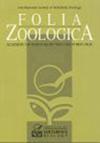Rodent species composition, relative abundance, and habitat association in the Mabira Central Forest Reserve, Uganda
Q2 Agricultural and Biological Sciences
引用次数: 10
Abstract
Abstract. A study was conducted in Mabira Central Forest Reserve in Uganda to determine rodent species composition, relative abundance, and habitat association. A total of 1,030 rodents belonging to 14 species were captured on 10,584 trap nights. Rodent species recorded include: Lophuromys stanleyi, Hylomyscus stella, Praomys jacksoni, Mastomys natalensis, Lophuromys ansorgei, Lemniscomys striatus, Aethomys hindei, Mus triton, Mus minutoides, Deomys ferrugineus, Gerbilliscus kempi, Rattus rattus, Grammomys kuru, and Hybomys univittatus. Overall, L. stanleyi (23.7%) was the most dominant species followed by H. stella, P. jacksoni, and M. natalensis. Species richness and evenness was highest in the regenerating forest habitat and least in the intact forest habitat. Rodent abundance was significantly affected by habitat type. The regenerating forest habitat had the highest number of animals, while the lowest numbers were observed in the depleted forest habitat. Species diversity was higher in regenerating forest habitat and lowest in the intact forest. The three habitats appeared distinct in terms of rodent species composition and there was a strong association between the two trapping grids in the same habitat type. All ordination plots showed that different rodent species consistently associated with distinct habitats. Habitat type and seasonal changes influenced rodent composition, relative abundance and habitat association. Composition of rodent community reflected the level of habitat degradation and can be used as a proxy for evaluating the biodiversity of lowland tropical forests.乌干达马比拉中央森林保护区啮齿动物种类组成、相对丰度和生境关联
摘要在乌干达Mabira中央森林保护区进行了一项研究,以确定啮齿动物的种类组成、相对丰度和栖息地关系。在10584个夹夜共捕获鼠类14种1030只。记录的啮齿动物种类有:长毛鼠、斯特拉鼠、杰克逊鼠、natalensis、安氏鼠、纹状鼠、印度鼠、小家鼠、minutoides鼠、ferrugineus鼠、Gerbilliscus kempi鼠、Rattus Rattus、Grammomys kuru和univittatus鼠。总体上,斯坦利氏夜蛾(23.7%)为优势种,其次为丝黛拉氏夜蛾、杰克逊氏夜蛾和纳塔勒氏夜蛾。物种丰富度和均匀度以更新林生境最高,以完整林生境最低。生境类型对鼠的丰度有显著影响。再生林生境的动物数量最多,枯竭林生境的动物数量最少。物种多样性在更新林生境中较高,在完整林生境中最低。3种生境的鼠种组成各不相同,同一生境类型的2种夹网之间存在较强的关联性。所有排序图均显示不同鼠种与不同生境的相关性一致。生境类型和季节变化影响鼠类组成、相对丰度和生境关联。啮齿动物群落组成反映了热带低地森林生境退化程度,可作为评价热带低地森林生物多样性的指标。
本文章由计算机程序翻译,如有差异,请以英文原文为准。
求助全文
约1分钟内获得全文
求助全文
来源期刊

Folia Zoologica
生物-动物学
CiteScore
1.70
自引率
0.00%
发文量
0
审稿时长
3 months
期刊介绍:
Information not localized
 求助内容:
求助内容: 应助结果提醒方式:
应助结果提醒方式:


